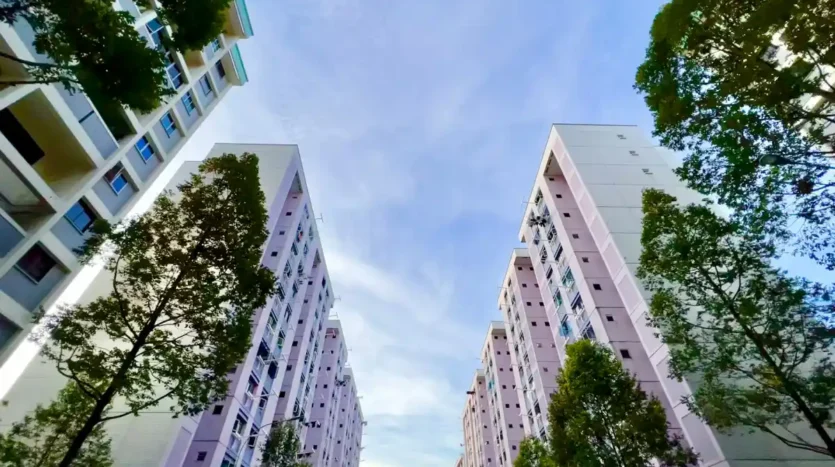Renting an Apartment in Singapore: Key Steps Every Professional Should Know
How to Find an Apartment in Singapore: A Step-by-Step Guide for Professionals
Finding an apartment in Singapore can feel like a full-time job, especially for professionals who are new to the city or balancing busy work schedules. The demand for rentals has been climbing steadily, with reports from the Urban Redevelopment Authority showing that private residential rents rose by over 8 percent in 2023 alone. For expatriates and local professionals alike, this means competition is tight, prices are high, and the process requires both preparation and strategy.
Whether you are relocating for work, upgrading your lifestyle, or searching for a more convenient location closer to the business districts, understanding how the rental market works is essential. This guide breaks down the process step by step, helping you navigate Singapore’s diverse apartment options and avoid costly mistakes.
Step 1: Understand the Types of Apartments in Singapore
The first step in apartment hunting in Singapore is knowing what is available. Professionals typically choose between three main categories of housing:
- HDB flats: These government-built flats are affordable and well-distributed across the island. However, they come with restrictions, as most foreigners cannot rent directly from the Housing & Development Board. The more common route is renting from HDB owners who sublet their units, although supply can be limited.
- Condominiums: Popular among working professionals and expatriates, condos come with facilities like swimming pools, gyms, and security services. They are generally more expensive than HDB flats, but their amenities and prime locations make them attractive to those who want convenience and lifestyle perks.
- Serviced Apartments: Best suited for professionals on short-term assignments, serviced apartments provide flexibility with fully furnished units, cleaning services, and utilities included. They tend to cost more, but they are hassle-free and ideal for those who prefer not to commit to long leases.
There are also walk-up apartments and landed properties, but these are niche markets that usually cater to families or those with very specific housing needs.
Step 2: Set a Realistic Budget
Renting in Singapore is not cheap, and setting a budget upfront is critical. On average, a one-bedroom apartment in central areas such as Orchard or Marina Bay can cost between SGD 3,500 and SGD 5,000 per month, while similar units in suburban districts like Jurong or Punggol range from SGD 2,000 to SGD 3,000.
Beyond rent, professionals should factor in additional costs such as stamp duty, agent fees, and utility deposits. Maintenance fees are typically included in condominium rentals, but not always in HDB flats. A good rule of thumb is to allocate 30 to 40 percent of your income for housing, leaving room for other expenses like transportation and insurance.
Step 3: Choose the Right Location
Location plays a huge role in rental decisions. For professionals, proximity to the workplace often outweighs other considerations, given Singapore’s fast-paced lifestyle.
- Central Business District (CBD): Ideal for professionals working in finance or multinational companies, with quick access to offices, restaurants, and nightlife.
- Orchard and River Valley: Premium addresses that appeal to expatriates looking for lifestyle convenience and modern living.
- East Coast and Katong: Known for a relaxed atmosphere, sea views, and diverse food options, this area is popular with both families and singles.
- Jurong and Woodlands: Emerging business hubs with more affordable rents, good for those who do not mind a longer commute.
When choosing a location, consider not only the distance to work but also nearby amenities such as supermarkets, public transport, and healthcare facilities.
Read also: Top Apartment Rental Websites in Singapore for Professionals
Step 4: Begin Your Apartment Search
Most professionals start their apartment search online. Trusted property portals such as PropertyGuru, 99.co, and SRX list thousands of available units, complete with photos, pricing, and details on nearby amenities. These platforms give you a sense of market pricing and help you compare options quickly.
Working with a licensed property agent is another effective approach. Agents registered with the Council for Estate Agencies (CEA) have insider knowledge, can arrange viewings, and assist with negotiations. While they typically charge a fee equivalent to half a month’s rent for leases under two years, their expertise can save you time and prevent costly missteps.
Some companies also provide housing support for expatriate employees, either through direct rental subsidies or by engaging relocation specialists. Networking within professional or expatriate communities can also uncover leads that are not listed online.
Step 5: Arrange Viewings and Shortlist Apartments
Pictures online rarely tell the whole story. Viewing apartments in person is essential to understand the actual condition of the unit, the surrounding environment, and the amenities. During viewings, pay attention to ventilation, natural light, noise levels, and the state of appliances.
It is also wise to ask landlords or agents about previous tenants, renovation history, and maintenance responsibilities. If anything seems unclear or rushed, consider it a red flag. A professional who takes time to inspect carefully will avoid future inconveniences.
Step 6: Review Lease Agreements Carefully
Once you have found an apartment in Singapore that fits your needs, the next step is reviewing the lease agreement. Most leases run for one or two years, and landlords usually require a security deposit of one to two months’ rent.
Pay attention to clauses regarding early termination, maintenance responsibilities, and the diplomatic clause, which allows expatriates to break the lease without penalty if they are relocated. Negotiating rent and minor terms is possible, especially if you can commit to a longer lease or are moving in quickly.
Step 7: Finalize the Rental and Move In
Before signing the tenancy agreement, you will typically submit a Letter of Intent (LOI) along with a good faith deposit. Required documents include your passport, employment pass, and proof of income. Once the landlord accepts, the tenancy agreement is signed, deposits are paid, and you can begin preparing to move in.
Many professionals schedule their move to coincide with their work calendar, ensuring they have a stable home base before diving into new assignments. Utilities such as electricity, water, and internet must be set up separately unless included in the rental.
Tips for Professionals Renting in Singapore
- Start searching one to two months before you plan to move.
- Be cautious of deals that look too good to be true, as rental scams are not uncommon.
- Know your tenant rights under Singapore law to protect yourself from unfair practices.
- Save on costs by considering shared apartments or renting slightly outside central districts if budget is a concern.
Conclusion
Finding an apartment in Singapore as a professional may seem overwhelming at first, but with the right approach, it becomes a manageable process. Understanding apartment types, setting a realistic budget, choosing the right location, and reviewing lease agreements carefully are the pillars of a successful rental experience.
With preparation and a clear strategy, you can secure a home that not only meets your practical needs but also enhances your lifestyle in one of Asia’s most dynamic cities.












